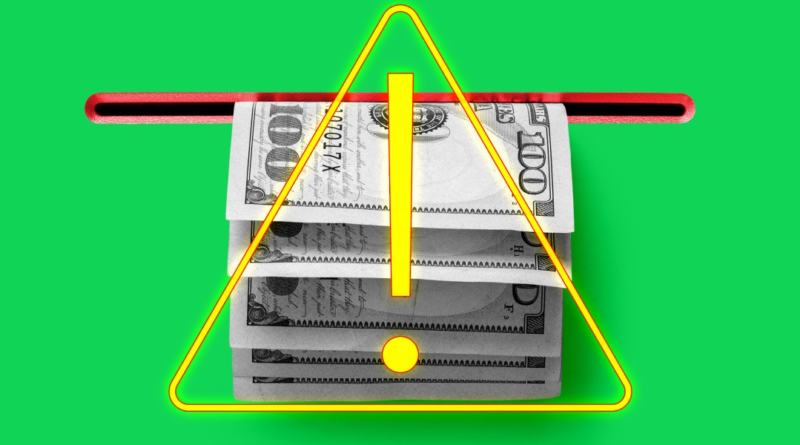CD early withdrawal penalties: how they work
A certificate of deposit (CD) is a safe place to keep your savings while earning more interest than you can usually get from traditional savings accounts. But unlike many savings accounts, a CD isn’t designed to offer easy access to your cash.
When you open a CD, you promise to leave that money put for a specific time. If you break that promise, your bank may charge an early withdrawal penalty—which could cost you some and, in extreme cases, all of your accrued interest.
CDs: A brief refresher
CDs are a specific type of savings account banks offer where you agree to deposit money for a set time. During that time, known as the CD’s term, your deposit earns interest.
When the term ends, your CD matures. You can cash out the CD to collect your initial deposit plus the accrued interest. You could also roll your money into a new CD with a different term and interest rate.
What is a CD early withdrawal penalty?
A CD early withdrawal penalty is a fee banks may charge if you withdraw funds before the CD matures. While not all banks and CDs have these penalties, they generally work the same; you may have to forfeit a portion of your accrued interest. In the worst cases, an early withdrawal penalty could cost you all your accrued interest plus some of your principal.
Federal law states that for a CD to qualify as a time or savings account with a fixed term, there must be a withdrawal penalty if a customer withdraws the money within the first six days after opening the account. The minimum penalty during this time is seven days’ interest. Banks often charge larger early withdrawal fees and apply them throughout the CD’s term, well beyond the first six days.
Banks charge penalties for early withdrawal for a few reasons. First, CDs typically pay higher interest rates than regular and high-yield savings accounts. “What you’re giving up for that higher interest rate [with a CD] is liquidity, or the ability to take out [your money] whenever you want,” says Scott Ferguson, founder and wealth advisor at Abundant Life Financial.
Next, banks use the money you deposit into a CD for other things, and your early withdrawal affects their plans. For instance, banks may deposit the money from the CDs it sells into timed investments that yield higher rates, says Ferguson. Your early withdrawal means the bank must also withdraw its funds early, so it charges you a fee for that inconvenience.
Finally, banks charge early withdrawal fees to recoup account servicing costs, including the time it takes bank employees to help customers open or close a CD account.
How to calculate a penalty for early CD withdrawal
Before you can calculate a CD early withdrawal penalty, you need to know how your bank’s early withdrawal penalty works. You can generally find this information in the paperwork you received when you opened the CD or in the deposit account agreement.
Depending on the CD, penalty for early withdrawal can be calculated in a few different ways. Banks usually charge early withdrawal penalties on either your total original deposit or the amount you withdraw early. They’ll then use that figure to determine the penalty—which is generally a set number of days’ or months’ interest.
If your bank calculates its penalty by the day, the formula is:
Penalty = (Amount withdrawn or original deposit amount) X (Interest rate/365 days) X Number of days’ interest
If your bank calculates its penalty by the month, the formula is:
Penalty = (Amount withdrawn or original deposit amount) X (Interest rate/12 months) X Number of months’ interest
Here’s how these calculations look in action. Suppose your bank’s penalty is 180 days’ interest on the amount withdrawn. In this case, withdrawing $1,000 from a CD with a 4.85% APY would incur a penalty of $23.92, calculated as follows:
$1,000 X (0.0485/356 days) X 180 days = $23.92
Banks may also set a minimum penalty. If your bank imposes a minimum penalty, check how the result of the formula compares to the minimum. You will generally have to pay the higher of the two. For example, say your bank’s minimum penalty is $25. In the above example, $23.92 is less than $25, so you would owe $25 since it’s greater than the amount calculated using the formula.
How much are early withdrawal penalties on CDs?
Each bank determines its early withdrawal penalties. While there’s no cap on the penalties banks can charge, most banks try to keep early withdrawal fees in line with competitors’ charges.
| CD early withdrawal penalties at top banks | ||
| Bank | Penalty on a 1-year CD | Penalty on a 3-year CD |
| Bank of America | 180 days interest | 180 days interest |
| Capital One | 3 months interest | 6 months interest |
| Chase | 180 days interest or total interest earned during current term, whichever is less | 180 days interest or total interest earned during current term, whichever is less |
| Synchrony Bank | 90 days simple interest | 180 days simple interest |
| U.S. Bank | Half of interest the money would have earned over entire term or 1% of the amount withdrawn, whichever is greater, plus $25 | Half of interest the money would have earned over entire term or 3% of the amount withdrawn, whichever is greater, plus $25 |
| Wells Fargo | 3 months interest | 12 months interest |
You typically have to give up at least a few months interest if you withdraw money from a CD early. Banks also tend to charge higher penalties on CDs with longer terms.
How to avoid early withdrawal penalties
If you’re looking at these fees and thinking there has to be a way to avoid them, you’re in luck. You have options, but some require planning to receive the full benefit.
Turn to your emergency fund
Ideally, you should have an emergency fund you can draw from to pay unexpected bills. Experts recommend having three to six months’ expenses safely tucked away in a savings account. Having a financial cushion can prevent having to tap higher-earning savings like CDs and running-up expensive credit card debt.
Request a waiver
Some banks may waive the penalty if you’re withdrawing money due to a crisis, like a death or a medical emergency, says Ferguson. Reach out to your bank and explain the situation. The worst they can do is say no.
Consider a no-penalty CD
If you want all the benefits of a CD but more flexible access to your funds, look for banks that offer no-penalty CDs. No-penalty CDs are illiquid for the first six days of ownership, but you won’t be stuck with fees if you need to tap funds past the six-day mark. But in exchange for this flexibility, no-penalty CDs tend to offer lower interest rates.
“They’re going to have a rate probably higher than a savings account or a money market, but not quite as high as a CD that would have the penalties for early withdrawal,” says Brittany Pedersen, director of deposit and payment operations at Georgia’s Own Credit Union.
Use a CD ladder
Opening a single CD ties your savings up until that certificate matures, but you can create regular opportunities to access your money using a CD ladder.
This strategy involves opening several CDs simultaneously, each with a different term. For example, you might open CDs with 3-, 6-, 9-, and 12-month terms. This strategy ensures you have a CD maturing every three months in case you need cash. If you need the money, great—withdraw the balance and interest. If you don’t, that’s fine—roll the money over into a new CD and keep the ladder going.
CD ladders can also help you increase your returns since they let you capture the best possible rate each time a CD matures. Even if interest rates decrease during your CD’s term, your money remains locked into a higher APY until maturity.
Explore a CD-secured loan
CD-secured loans are a type of collateralized personal loan your bank might offer. These loans use your CDs as collateral, which means your CDs remain untouched.
If you have a substantial sum invested in CDs but don’t want to jeopardize your interest earnings, CD-secured loans can give you cash in a pinch—and at lower rates than unsecured personal loans, says Pedersen. Before taking out any loan, it’s important to make sure you can meet the monthly payment, especially when cash is tight.
When paying an early withdrawal penalty makes sense
Despite all the drawbacks of CD early withdrawal penalties, there are times when paying them could make sense. You’ll need to assess each situation on a case-by-case basis to determine when paying the penalty puts you ahead.
“If you had to buy an air conditioning unit, it might be a lot cheaper just to pay the penalty to pull the funds from the CD versus putting that charge on a credit card, especially with credit card interest rates at 20% and higher for some people,” Pedersen says.
Paying an early withdrawal penalty could also make sense if your CD is earning considerably less than current interest rates. For instance, say you have a long-term CD earning in the 2% range, and new CDs offer APYs in the 5% range. Cashing out with a penalty could mean earning 3% more on your cash if you reinvest the funds at current rates.
Frequently asked questions
What happens if I take my money out of a CD early?
You typically must pay an early withdrawal fee if you take money from a CD before maturity. You may not owe a fee if you take money out early from a no-penalty CD, as long as it’s been more than six days since you opened the account.
What is the penalty for early withdrawal of a CD?
Early withdrawal penalties on CDs vary by bank and typically depend on the term length and your withdrawal amount. Fees can range from seven to 365 days’ interest or more. Your bank’s deposit agreement will lay out the early withdrawal terms.
Can you deduct an early withdrawal penalty on a CD at tax time?
Federal law states that you can deduct an early withdrawal penalty on a CD when calculating your adjusted gross income on your taxes. If you have questions about where to account for early withdrawal fees on your Form 1040, a tax advisor can help.


